Best International Roaming Plans in USA, Canada, Australia, UK
Traveling abroad means staying connected – but international roaming charges can quickly blow up your budget. In this guide, we compare the best international roaming plans in the USA, Canada, Australia, and the UK for 2025. Whether you’re a tourist, a business traveler, or planning a long stay, we break down each country’s major carriers, plan costs, data limits, and extras. We’ll also explain eSIM vs physical SIM options and highlight affordable alternatives.
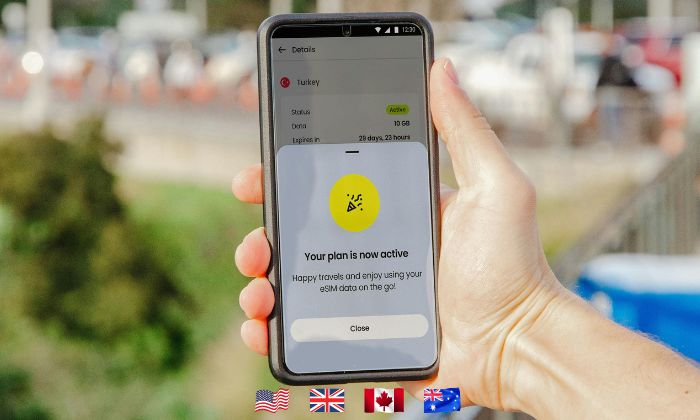
International roaming lets your phone use foreign networks when you travel. When you enter a new country, your carrier switches you onto a local network under a roaming agreement, so you can make calls, send texts, and use data as if at home (though rates are typically much higher). For example, Verizon’s TravelPass offers unlimited talk, text, and data in 210+ countries for a daily fee. These “flat-rate” roaming packages (like AT&T’s International Day Pass) let you keep your normal data and voice plan while abroad.
What is International Roaming and How Does It Work?
International roaming is when your mobile device connects to another country’s network so you can use your home phone number abroad. Carriers have agreements allowing this: you pay your home carrier’s roaming charges instead of local prepaid rates. Typically, roaming covers voice calls and SMS (billed at foreign rates) and data (internet). Some plans only include talk/text and charge extra for data, while others bundle all. For instance, AT&T’s International Day Pass ($12/day) lets you use your domestic data abroad, and unlimited texts to anywhere. In contrast, pay-per-use roaming (without a pass) often has exorbitant per-minute or per-MB rates.
How it works: Your phone automatically “roams” onto a partner network in the country you visit. As soon as you enable data roaming or make a call, you begin a “roaming session”. For example, Verizon starts a 24-hour TravelPass session when you use your device overseas. Only one daily fee is charged per 24-hour period (even across multiple countries that day). Voice calls from abroad may only be included if calling your home country or destination; otherwise extra long-distance rates often apply. Most roaming plans include unlimited incoming calls (so friends can still reach you) and free incoming SMS, while sending texts and dialing out usually count toward daily usage.
Types of roaming:
-
Voice & SMS roaming covers making/receiving calls and texts abroad. Carriers typically include these in roaming passes or charge per minute/text otherwise.
-
Data roaming uses mobile internet abroad. It’s usually billed per megabyte without a plan, so travellers often buy data add-ons or daily passes to cap costs.
-
Global roaming packages combine voice, text, and data into one fee, letting you use your home plan overseas. These are usually the best value for heavy users.
-
Roaming vs. Local SIM: Buying a local SIM card in your destination often gives cheaper local data/calls, but you lose your home number. Roaming lets you keep your number and voicemail but at higher rates. A compromise is a travel eSIM (discussed later): these act like local data plans without changing your SIM.
Phones must support the local network bands to roam (e.g. US carriers use different frequencies). Many modern phones are “quad-band” or multi-band, so they can roam on GSM/3G/4G networks worldwide. However, if your phone is older or locked to a carrier, it may not roam seamlessly.
Key Factors to Consider When Choosing a Roaming Plan
When comparing roaming options, keep these factors in mind:
-
Coverage: Which countries and regions does the plan include? Cheaper daily passes may work in more limited zones, while pricier plans cover more destinations. For example, AT&T’s Day Pass works in 210+ destinations, while Telstra’s Day Pass has “Zone 1” Oceania and “Zone 2” Americas/Europe coverages.
-
Cost structure: Is it a flat daily fee or a monthly fee? Daily passes (e.g. $10/day) charge only for days you use your phone abroad. Some countries also offer monthly add-ons (e.g. EE’s £25 Roam Abroad Pass) for longer trips. Check both the base rate and any caps (many plans cap at ~20 days per billing cycle, then charge no more within that cycle).
-
Data speed: Does the plan include 3G, 4G, or 5G? Most modern plans offer up to 4G/5G speeds, but fair-use policies may throttle after a certain daily usage (Bell, for instance, throttles beyond 5 GB/day on its Roam Better plan).
-
Validity: Is the plan good per day, per trip, or per month? Daily passes (like T-Mobile’s $5/day) reset every 24 hours, while monthly plans (EE’s £25/mo) give an entire month’s access.
-
Included extras: Some roaming packages include unlimited incoming calls/SMS (common), free calls/texts to your home country (like Verizon includes calls back to US), or bonus data for hotspots. Others may give access to entertainment or Wi-Fi services. Always read the fine print (e.g. AT&T International Day Pass charges extra for in-flight calls).
-
Hidden fees: Watch out for activation fees or data overage charges. For example, AT&T warns that background apps can trigger a daily fee, and if your plan isn’t unlimited, you might face domestic overage charges. Many carriers charge extra for calls to non-local numbers or exclude certain premium services.
-
eSIM vs. physical SIM: Modern phones support eSIMs (embedded SIM profiles) as well as traditional plastic SIM cards. eSIMs allow you to instantly load a travel data plan on your phone without buying a local card or swapping SIMs. They’re especially convenient for short trips. Physical SIMs (or travel SIMs) work in any unlocked phone and often include local dialing. In many cases, an eSIM travel plan offers the same coverage as a local SIM plan, but is set up online.
According to telecom experts, the main advantage of an eSIM is flexibility: you can buy and activate a plan online the moment you arrive in a country, then delete it when you’re done, all without losing your home SIM’s data or contacts. The downside is that not all devices or carriers support eSIMs yet. A physical travel SIM or a dual-SIM phone also works if you have one. Ultimately, choose the format that works for your devices and travel style.
Best International Roaming Plans – Country-by-Country Breakdown
Below we break down roaming options in each region. We focus on the major carriers and their most popular roaming passes, plus any notable tourist/prepaid SIM options. Where applicable, we highlight typical costs, data allowances, and who the plan suits best.
USA
Major networks: AT&T, T-Mobile, Verizon. All are nationwide carriers with extensive 4G/5G coverage in the US.
-
AT&T – International Day Pass ($12/day): Use your AT&T plan abroad (210+ destinations) for $12 per day per line. Data use is drawn from your domestic plan; unlimited texting and receiving calls are included (outgoing calls to non-US/non-local numbers incur extra long-distance fees). Additional lines on the same day are just $6 each. This is ideal if your US plan has generous data. Good for business travelers who need high data and voice coverage in many countries.
-
T-Mobile – International Pass ($5/day): T-Mobile offers a 24-hour pass for $5 (using 512 MB of high-speed data, plus unlimited calls and texts). Longer passes (10-day, 30-day) with more data exist, but the popular $5/day pass is great for short trips with light data needs. Note: only 512 MB/day of 5G data is included; after that speed drops. Best for budget travelers who need basic email/maps and texts.
-
Verizon – TravelPass ($12/day outside N.A.): Verizon’s TravelPass works in 210+ countries. It charges $6/day for roaming in Canada/Mexico, and $12/day for other countries. When active, you keep your home plan’s talk, text, and up to 5 GB of high-speed data per day. After 5 GB, data slows to 3G speeds. Verizon includes calls within the visited country and back to the U.S. on TravelPass. This is good for frequent travelers who want simplicity, or customers on unlimited plans (which get TravelPass data bundled in some cases).
Traveler tips for USA: US carriers usually require you to turn on data roaming before leaving. T-Mobile includes USA in some of its plans by default, but AT&T/Verizon users must manually subscribe. Visitor plans (prepaid tourist SIMs) do exist: e.g. several MVNOs sell US prepaid SIMs with data. However, roaming passes let you use your existing number (and often include unlimited inbound texting).
|
Carrier |
Plan Name |
Price |
Data |
Validity |
Extras |
Best For |
|
AT&T |
International Day Pass |
$12/day |
Home plan data |
Per day |
Unlimited calls/text, 210+ countries |
Business travellers |
|
T-Mobile |
International Pass |
$5/day |
0.5 GB high-speed |
Per day |
Unlimited calls/text |
Budget travellers |
|
Verizon |
TravelPass |
$12/day |
Up to 5 GB data/day |
Per day |
5G access (on 5 G plans), calls to US included |
Frequent travellers |
Canada
Major networks: Rogers, Bell, Telus. These three share similar roaming programs (and now have an informal “big three” alliance).
-
Rogers – Roam Like Home ($12/day U.S., $15/day other): Rogers’ popular Roam Like Home adds your home plan to roaming. In the U.S. it’s $12/day (including unlimited talk/text in the U.S. and Canada); in other countries $15/day. You pay only on days you use your phone. It’s like adding a daily flat fee to your regular plan, so you keep your data and minutes. Good for short trips to the U.S. Rogers also often includes a few free roam days on premium plans. Note: Rogers imposes a 20-day cap per billing cycle on Roam Like Home fees.
-
Bell – Roam Better ($13/day US, $16/day other): Bell’s equivalent is Roam Better with Home Data. It costs $13/day in the U.S. and $16/day in most other countries. It covers unlimited calls/texts and your plan’s data (up to fair-use limits). (Bell’s TravelPass add-ons for specific regions also exist at fixed week-long or two-week rates.) Bell’s 5G users keep 5G speeds abroad. This is a premium roaming product, and it automatically throttles data to ~512 kbps if you use over 5 GB in one day.
-
Telus – Easy Roam ($14/day US, $16/day other): Telus replaced its old Easy Roam with a new one: $14/day in the U.S., $16/day in other countries. Like Bell, this unlocks your plan allowances abroad (unlimited talk/text and plan data). Telus advertises 5G coverage in the U.S. if your plan supports it. Note that Telus’ site lists $14, not $12 as sometimes quoted; always verify the current rate on your plan. Telus often offers promotional days included on premium plans.
In Canada, many postpaid plans include some free roam days in the U.S. (or bonus data), but the daily plans above let you roam in 100+ countries with no surprises. All three carriers also sell prepaid travel SIMs and offer pay-per-use roaming (very expensive per MB/minute), so it pays to activate the daily plan.
|
Carrier |
Plan Name |
Price |
Data |
Validity |
Extras |
Best For |
|
Rogers |
Roam Like Home |
$12/day US |
Home plan data |
Per day |
Unlimited calls/text (to Canada/US), 100+ countries |
Short trips |
|
Bell |
Roam Better |
$13/day US |
Home plan data |
Per day |
5G where available, extensive coverage |
Premium use |
|
Telus |
Easy Roam |
$14/day US |
Home plan data |
Per day |
Unlimited calls/text, global coverage |
Frequent flyers |
Australia
Major networks: Telstra, Optus, Vodafone AU. In Australia, roaming tends to be expensive without a plan, so all three offer “Roaming Pass” products at similar prices.
-
Telstra – International Day Pass ($10/day): Telstra charges $10 per day in most countries (zone 2, which includes US, Canada, Europe, etc.). This gives you 2 GB of data per day plus unlimited SMS and standard calls. (In Zone 1 countries like NZ, it’s only $5/day for 2 GB.) The Day Pass automatically switches on when you use your phone abroad. After 2 GB, you can top up more at $10 per 2 GB. Good for business travelers or anyone wanting a fixed daily fee. This plan includes “unlimited standard calls to standard numbers” (essentially you can call home or local numbers freely once you have the pass on).
-
Optus – Travel Pass ($10/day): Optus’ postpaid Travel Pass costs $10/day for 1 GB data and unlimited calls/texts in 150+ destinations. (Optus also has a $5/day “Daily Roaming” with 5 GB for select plans.) The $10 pass is broadly similar to Telstra’s: for example, for the US it includes your plan’s voice/text allowances and 1 GB data. Optus specifically highlights that it works on select postpaid plans (many include it automatically). This is great for holiday travel in Asia-Pacific and the US.
-
Vodafone Australia – $5 Roaming: Vodafone is unusual: on eligible plans ($69+ infinite data etc.), just $5 extra per day lets you roam with your plan’s full data and call/text allowances in 100+ destinations. This includes the USA, Europe, and Asia. The fine print is that after you use your plan’s data, additional 1 GB is $5. Still, $5/day is the cheapest of all, making Vodafone best for budget travelers. It’s limited to 90 days per year of use.
|
Carrier |
Plan Name |
Price |
Data |
Validity |
Extras |
Best For |
|
Telstra |
International Day Pass |
$10/day |
2 GB/day |
Per day |
Unlimited calls/SMS (standard numbers) |
Business trips |
|
Optus |
Travel Pass |
$10/day |
1 GB/day |
Per day |
Unlimited calls/texts |
Holiday travel |
|
Vodafone AU |
$5 Roaming |
$5/day |
Home plan data |
Per day |
Unlimited calls/texts |
Budget travellers |
UK
Major networks: EE, Vodafone UK, O2, Three. Post-Brexit, free EU roaming mostly ended for UK networks (except O2 retains it on some plans).
-
EE – Roam Abroad Pass (£25/mo): For £25 per month, EE’s pass lets customers use their normal plan allowances in the USA, Canada, Mexico, Australia, New Zealand, and 47 other countries in Europe. (These include most EU countries but not all overseas territories.) This is a monthly add-on, so it’s best if you’ll spend extended time overseas. It covers up to your plan’s 5G data cap. Smaller Euro trips might use EE’s daily passes (e.g. EE also sells £1/day passes in Europe), but the £25 pass is simplest for long stays.
-
Vodafone UK – Daily Roaming (£6/day): Vodafone previously offered “Global Roaming” at about £6/day for Zone C countries like the US. This applies to older plans (pre-Aug 2021); newer plans cost £7.39/day. This unlocks your UK plan data in many non-EU countries. Vodafone’s newer “EVO” plans include a number of zones with no extra charges (especially Europe), but for pay-as-you-go roaming, budget travelers should count on roughly £6/day in the USA/Asia..
-
Three UK – Go Roam: Three’s Go Roam feature is very traveler-friendly. It lets you use your UK allowances in EU, USA, AUS, and 70+ countries at no extra cost (with a 12 GB/day fair use limit) if your plan includes it. If you don’t have it built-in, you can buy a daily pass: £2/day in Europe or £5/day “Around the World” (including USA/Canada/AUS) to use your allowance. In short, Three’s standard Pay Monthly plans generally let you roam for free or very cheap globally. This makes Three the best budget option for UK travelers, especially in Europe or the US.
|
Carrier |
Plan Name |
Price |
Data |
Validity |
Extras |
Best For |
|
EE |
Roam Abroad Pass |
£25/month |
Home plan data |
Monthly |
5G access, covers USA/Canada/Mexico/AUS/EU |
Long trips |
|
Vodafone UK |
Global Roaming |
£6/day (old plans) |
Home plan data |
Per day |
Unlimited calls/texts, 80+ countries |
Short trips |
|
Three UK |
Go Roam |
Included or £2–£5/day |
Home plan data (12GB/day cap) |
Per day |
3G/4G allowed, EU/USA/AUS free |
Budget travel |
Global Roaming Alternatives
Besides carrier plans, there are travel SIM and hotspot alternatives:
-
Travel eSIM providers: Companies like Airalo, Holafly, Nomad, GigSky sell prepaid eSIM data plans for many countries or regions. For example, Holafly offers unlimited-data US eSIMs (e.g. 15 days unlimited for ~$49), and Airalo has 200+ country-specific or regional eSIMs (prices as low as a few dollars per GB). An eSIM can be installed instantly and works like a local SIM. It avoids roaming fees and lets you pay only for what you plan in advance. However, eSIMs usually only provide data (calls must go out via apps/VoIP). They also depend on your phone being unlocked and eSIM-compatible.
-
International SIM cards: Companies such as OneSimCard, KnowRoaming, WorldSIM sell global SIM cards that work in dozens of countries. These are physical SIMs (or sometimes plug-in chips) you pre-load with credit. They often offer pay-as-you-go rates or daily packages in many countries. They can be handy if you visit multiple countries and want one SIM, but per-minute rates on calls/texts can be high.
-
Portable Wi-Fi devices: Pocket Wi-Fi hotspots (e.g. Skyroam, GlocalMe) let you share a data connection with your devices. You buy data credits or a monthly pass to connect to their networks. Pros: all your devices can use it, and you avoid SIM swapping. Cons: it’s an extra device to charge and carry, and data may be slower or more expensive than local SIMs.
-
Prepaid local SIM cards: In some cases, the cheapest data is a local pay-as-you-go SIM in each country you visit. This requires buying a new SIM card and phone number in each country. It’s often cheaper per GB than roaming, but inconvenient to set up and you lose your home mobile number until you switch back.
Compared to carriers’ roaming, these alternatives offer flexibility. Travel eSIMs and SIMs can be far cheaper for heavy data use (no extra “roaming” fees), but they don’t carry your home number. For example, a Holafly USA eSIM can give unlimited data for a flat fee, which beats any carrier roaming for data needs. On the other hand, carrier roaming plans mean you don’t have to adjust your number or SIM – you just pay for data as needed.
Price Comparison Table – Quick Overview
The table below summarizes the cheapest and premium options by country, as well as a popular eSIM alternative. It highlights the low-end daily fee and a high-end roaming solution for context:
|
Country |
Cheapest Daily Option |
Premium Option |
eSIM Alternative |
|
USA |
T-Mobile $5/day |
Verizon TravelPass $12/day |
Airalo USA eSIM (~$5/GB) |
|
Canada |
Rogers $12/day (Roam Like Home) |
Bell $13/day (Roam Better) |
Holafly Canada eSIM |
|
Australia |
Vodafone $5/day |
Telstra $10/day |
Nomad AU eSIM |
|
UK |
Vodafone £6/day |
EE £25/month |
Airalo UK eSIM |
(Note: eSIM prices vary by data plan and provider. The above are representative examples.)
Tips to Save Money on International Roaming
-
Activate an eSIM or plan before travel: Buying a travel eSIM or carrier plan while still at home often lets you compare prices and avoid airport surcharges.
-
Use Wi‑Fi whenever possible: Make calls and send messages over Wi-Fi apps (WhatsApp, Skype, iMessage) instead of cellular data. Even turning on Wi-Fi Calling (if your carrier and device support it) can let you dial home via Wi-Fi at no extra cost.
-
Turn off background data: Before leaving, disable background app refresh, auto-updates, and push email sync on your phone. Even with a roaming plan, unwanted background usage can eat data or trigger fees.
-
Download offline content: Preload offline maps (e.g. Google Maps offline areas) and offline entertainment (music, movies, e-books) so you don’t need data while out and about.
-
Monitor your usage: Keep an eye on daily data used. Carriers often send you alerts when you reach a limit (e.g. 5 GB on TravelPass or fair-use 12 GB on Three).
-
Check perks from your credit card: Some premium credit cards offer automatic international roaming or travel SIM benefits (e.g. “free global Wi-Fi” or data stipend). It’s worth checking your card’s travel perks.
Common Mistakes to Avoid
-
Not enabling roaming: Many travelers forget to turn on data roaming or buy the plan before departure. On most phones, you must switch “Data Roaming” on in settings, or your plan won’t activate and you’ll be on pay-per-use rates.
-
Forgetting to toggle off Wi-Fi Calling: If Wi-Fi Calling is on, making a call from abroad can still trigger a roaming fee unless you connect to a U.S./UK Wi-Fi network. Better to disable it to be safe.
-
Ignoring fair-use limits: Some “unlimited” offers are actually limited to a certain daily usage (e.g. Three’s 12 GB/day, or speeds throttled after 5 GB on Bell). Going over can mean slower speeds or extra charges.
-
Assuming 5G works everywhere: Carriers advertise 5G roaming, but in reality coverage can be spotty. In less urban areas or on smaller partner networks, you may only get 4G or 3G.
-
Not tracking days of use: Roaming passes often have a maximum charge per billing cycle (e.g. 20-day cap for Bell/Telus). If your trip spans a billing reset, you could pay double for the same days, so plan accordingly.
FAQs
Q: Which carrier has the cheapest roaming plan in the USA?
A: For basic usage, T-Mobile’s $5/day International Pass (512 MB/day) is the cheapest among major U.S. networks. However, if you need more data, consider carrier-independent eSIMs.
Q: Is it better to buy a local SIM or use roaming?
A: A local SIM often gives cheaper local rates (especially for data) but means a new number and losing access to your home voicemail. Roaming lets you keep your number for calls/texts from home, but at a premium. For data-heavy travel, a travel eSIM is often the sweet spot: it gives local rates with your phone’s convenience.
Q: Can I use my UK SIM in Canada without extra charges?
A: Not usually – UK carriers treat Canada like a foreign country for roaming (EE, Vodafone, and Three charge daily or per-use rates). O2 offers free roaming to Canada on some plans, but most will charge. You’d have to add an international travel pass or eSIM for Canada to avoid high fees.
Q: Do eSIMs work everywhere?
A: eSIM availability is growing: most modern flagships support it. Major cities in 100+ countries offer eSIM plans via providers like Airalo or Holafly. However, rural coverage depends on local networks. Always check that your phone is unlocked and eSIM-compatible (iPhone XS and newer, many Androids from 2020+). If you need voice calls, note eSIMs usually only provide data (calls go over apps).
Q: How do I activate roaming on my phone?
A: Typically, you enable cellular data and Data Roaming in your phone’s Settings before you fly. Then add the carrier’s travel pass (via their app or USSD code) or install an eSIM profile. For example, Verizon instructs: “Turn on cellular data or data roaming when you go to [the] TravelPass country” to start a session. Once abroad, your daily fee begins when you use any data, text, or call.
Conclusion & Recommendations
Choosing the right roaming plan can save you a lot. In each country we covered, the budget-friendly daily passes are T-Mobile’s $5 (USA), Vodafone AU’s $5 (Australia), and Three UK’s inclusions (£5/day global). Premium plans include Verizon’s $12/day (USA), Bell’s $13/day (Canada), Telstra’s $10/day (Australia), and EE’s £25/month (UK). A travel eSIM often beats all for pure data value (for example, Holafly’s unlimited U.S. eSIM vs. $12/day TravelPass), but remember eSIMs usually mean app-calling instead of dialing.
Before your next trip, always compare the daily rates, data limits, and country coverage of each option. Check if your carrier includes any free roam days or if your premium credit card has perks. And don’t forget Wi-Fi and background data settings – turning off unwanted connectivity can avoid accidental charges.
Final tip: When in doubt, start in airplane mode and connect only via known Wi-Fi until you confirm your plan is active. By planning ahead and choosing the right roaming or local data solution, you can “roam like a local” without getting sticker shock. Safe travels!
References and Sources
- AT&T – International Day Pass
- T-Mobile – International Pass
- Verizon – TravelPass FAQs
- Telus – Easy Roam
- Bell – Roam Better FAQs
- Telstra – International Roaming Day Pass
- Optus – Roaming
- Vodafone AU – $5 Roaming info
- EE UK – Roam Abroad Pass T&C
- Vodafone UK – Roaming with Vodafone in 2024: Everything you need to know
- Three UK – Go Roam
- Wikipedia – Roaming
- BetterRoaming – eSIM vs Physical SIM: Which is right for you?
- Holafly – eSIM for the USA
- The Independent – Brexit and roaming (post-Brexit charges)
Suggestions for you

Vodafone International Roaming Charges, Plans, Countries, etc
4491 Views
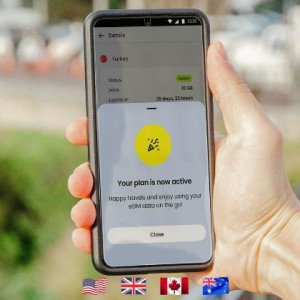
Best International Roaming Plans in USA, Canada, Australia, UK
865 Views
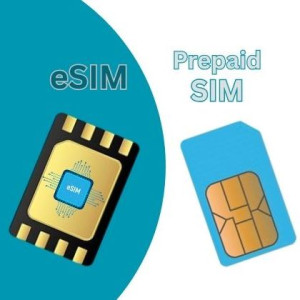
Physical Prepaid Sim Vs eSIM: Travelers Guide and Comparison
642 Views

Cheap MTN Data Code - Get the Cheapest MTN Data Plan in Nigeria
80455 Views
How to Activate eSIM on Pixel 3 and Pixel 3a (Step-by-Step Guide)
810 Views
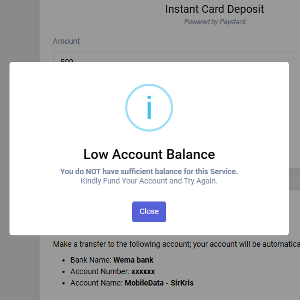
How to Secure your VTU Portal using the Low User Balance feature
4149 Views

Best Free Website Designs for Your VTU Portal
7966 Views

List of MTN Cheap Data Code in Nigeria
64055 Views

How to Build a VTU Website in Nigeria by Yourself
4500 Views
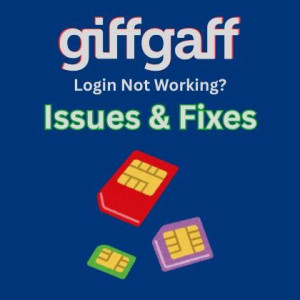
Giffgaff Log In Not Working? Common Issues, Fixes and Giffgaff Contact Details
525 Views